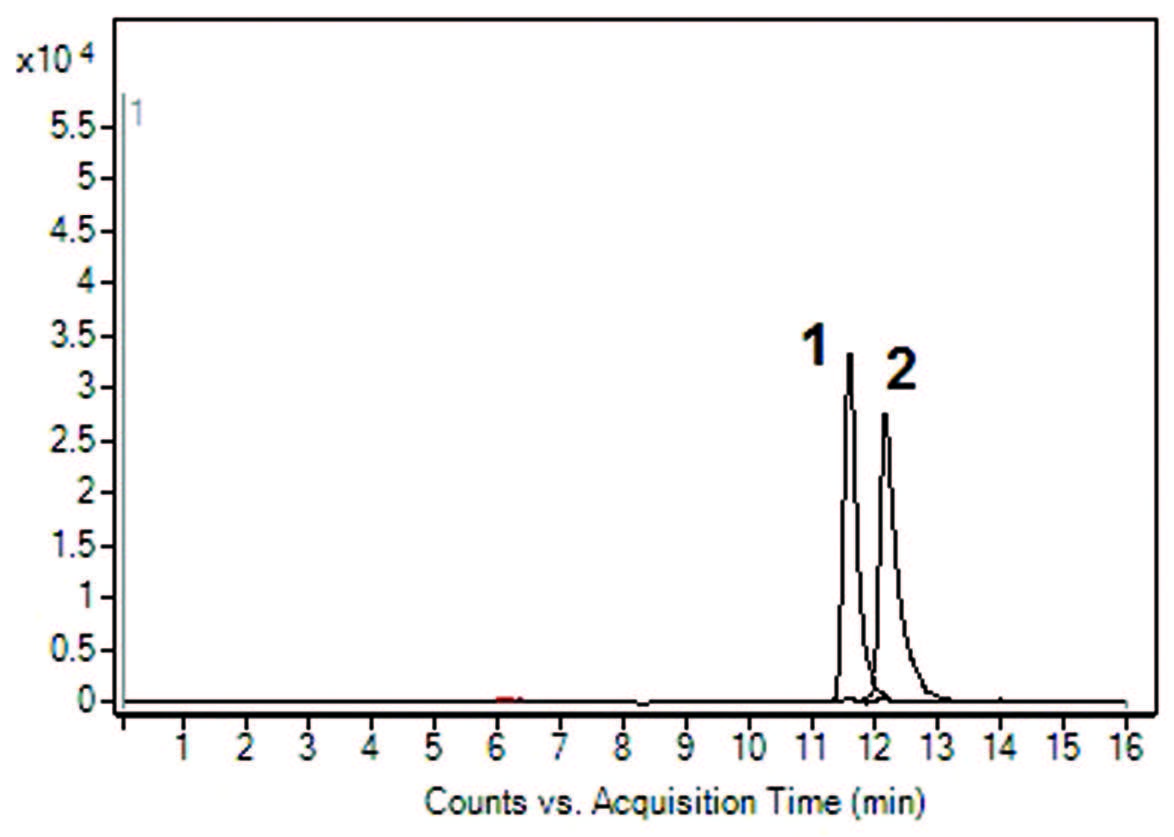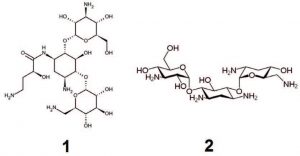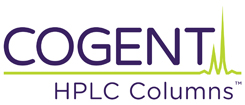Highly Polar Antibiotic Separation
These two Antibiotic agents present a considerable challenge to chromatographers. As highly hydrophilic compounds, they are generally poorly retained by conventional Reversed Phase methods that rely on an analytes hydrophobicity. In addition, they exhibit very low UV absorption and therefore more sophisticated detection methods are often required.
In this application, an LC-MS separation of the two compounds is presented using the Cogent Diamond Hydride Column. The two peaks are baseline separated chromatographically, but further specificity is also obtained by the use of extracted Ion Chromatograms (EICs) for the [M+H]+ ion of each compound. Furthermore, the Mobile Phase does not use ion pair agents and hence can be suitable for methods using ELSD or similar detectors.


Peaks:
1. Amikacin, m/z 586.2930 [M+H]+
2. Tobramycin, m/z 486.2664 [M+H]+
Method Conditions
Column: Cogent Diamond Hydride™, 4μm, 100Å
Catalog No.: 70000-10P-2
Dimensions: 2.1 x 100mm
Mobile Phase:
—A: DI Water / 0.1% Formic Acid
—B: Acetonitrile / 0.1% Formic Acid
Gradient:
| Time (Minutes) | %B |
| 0 | 85 |
| 2 | 85 |
| 10 | 20 |
| 11 | 20 |
| 12 | 85 |
Flow rate: 0.4 mL/Minute
Detection: ESI – POS – Agilent 6210 MSD TOF Mass Spectrometer
Injection vol.: 1μL
Sample Preparation: 0.01 mg/mL Amikacin & Tobramycin reference standard solution mix
Note: Amikacin and Tobramycin are Aminoglycoside antibiotics, effective against multi-resistance Gram-negative bacteria. They act by disrupting bacterial protein synthesis but can have significant side effects, including hearing loss and kidney damage. Amikacin is marketed as Amikin® and Tobramycin as Tobrex®.
Attachment
No 351 Amikacin & Tobramycin.pdf 0.4 Mb Download File


